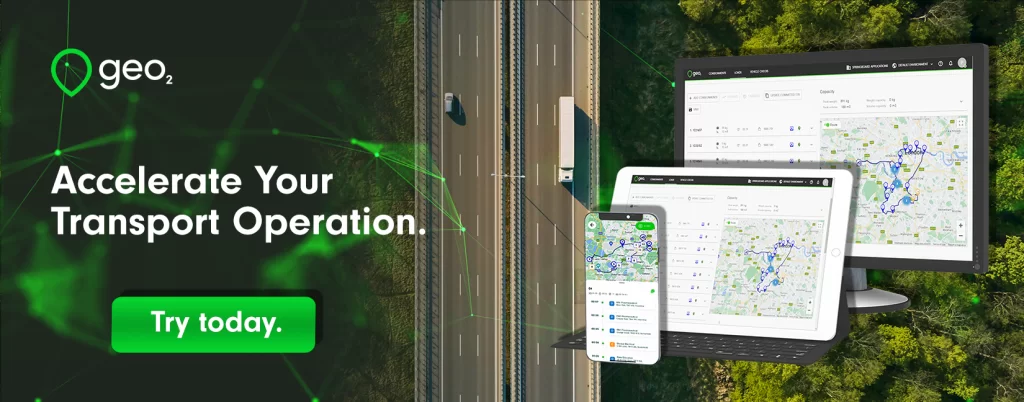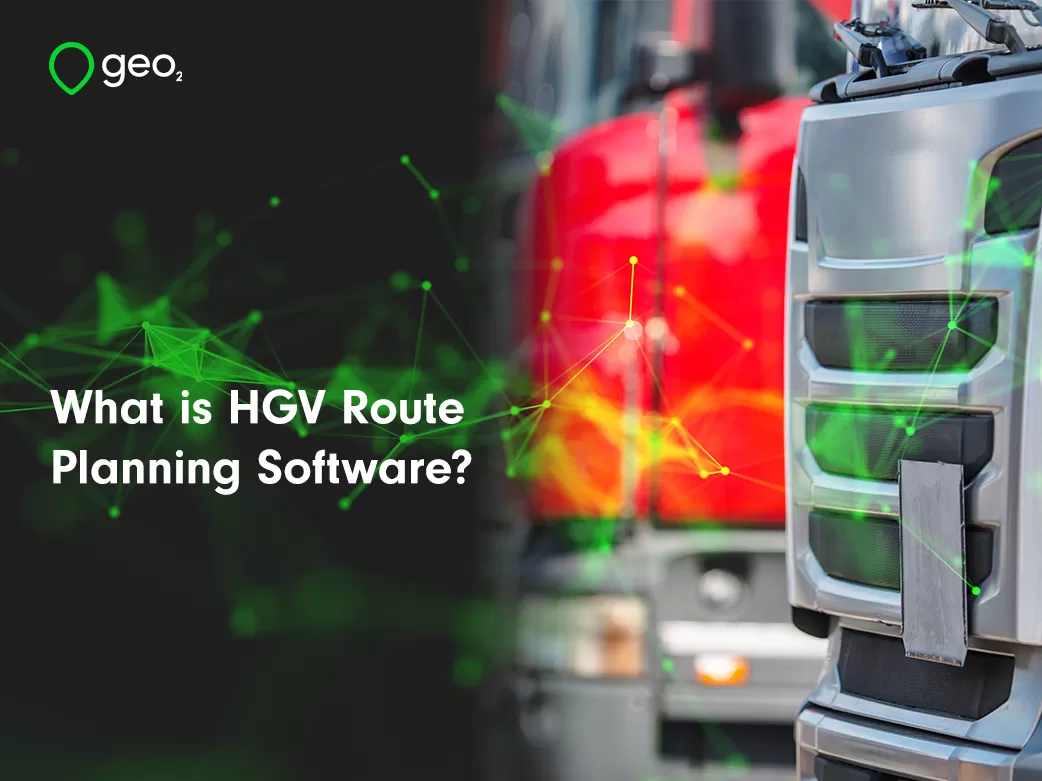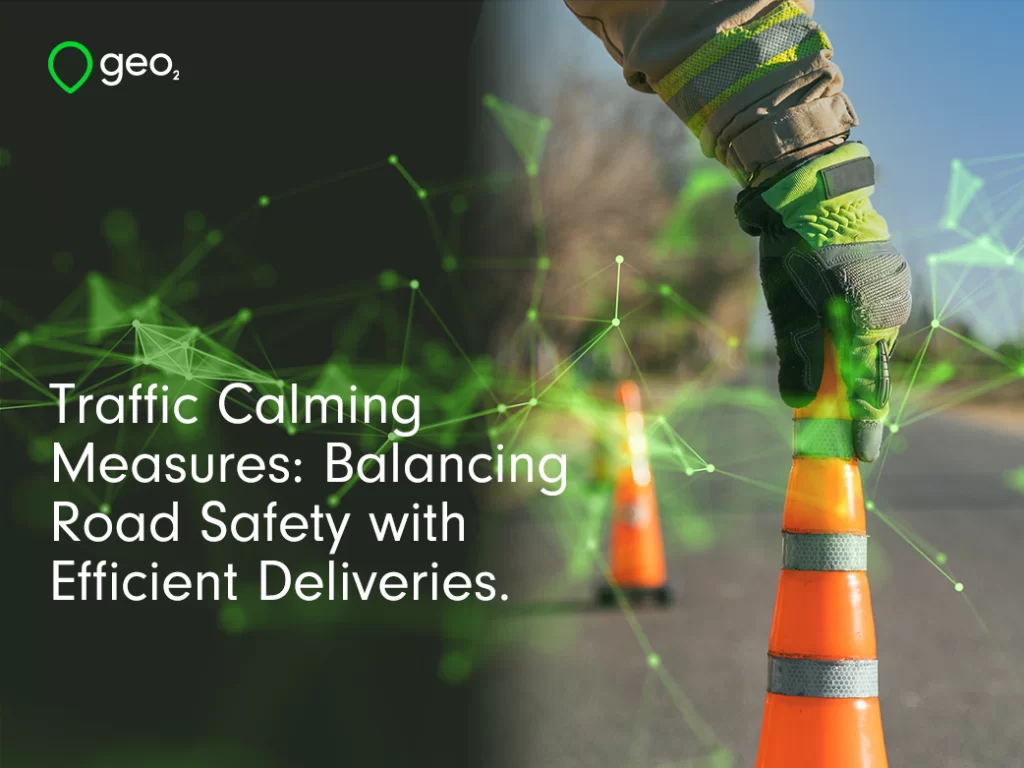
Traffic Calming Measures: Balancing Road Safety with Efficient Deliveries.
Traffic calming measures are essential for reducing vehicle speeds and enhancing road safety. Delivery drivers navigate Britain’s roads daily, so it’s important for them to understand traffic calming measures and how they can impact driving routes and delivery times.
Here, we examine the reasons why traffic calming measures are implemented, the various forms they take and how you should drive in areas that have them.
Need help choosing a TMS?
Download the Free Guide Now.
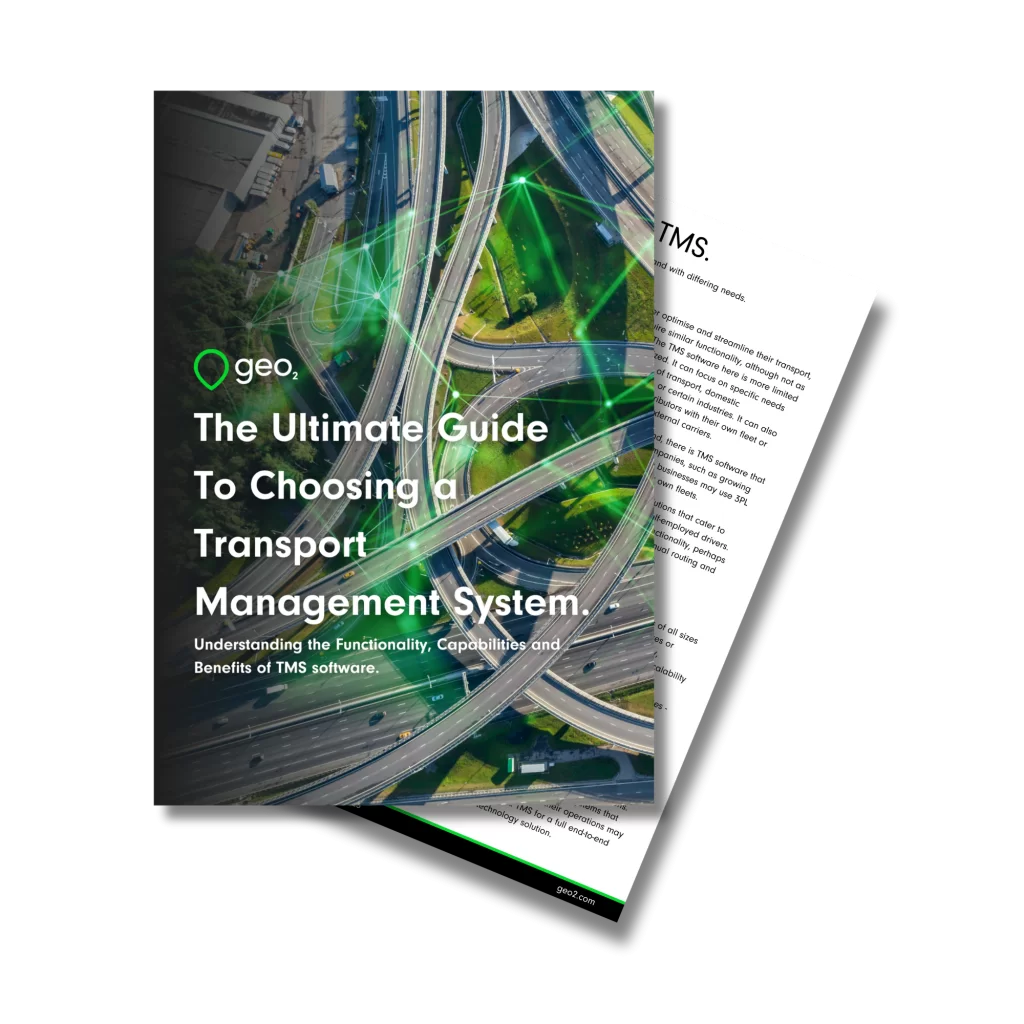
Table of Contents.
What’s the Reason for Traffic Calming Measures?
Traffic calming measures are implemented in a bid to reduce vehicle speeds. Speeding vehicles are dangerous. The speeding drivers themselves are at greater risk the faster they drive. But there is also the wider threat that pedestrians and other road users might be injured or killed.
Nearly 30,000 people are killed or seriously injured every year on Britain’s roads and there are more than 135,000 incidents that cause injuries. Using traffic calming measures can reduce or limit traffic speeds and improve road safety for everyone.
The likelihood of fatal accidents goes up as speeds increase. A pedestrian struck by a driver doing 35 mph is more than twice as likely to be killed than if the driver was going 30 mph. Traffic calming measures proactively safeguard communities by reducing the risk of accidents and helping motorised vehicles, cyclists and pedestrians to all coexist more safely.
Vehicle speeds are mainly controlled in order to protect more vulnerable road users from fast-moving traffic – like pedestrians and cyclists, for example. Zones around schools are common too, with speeds limited to 20 mph to protect children.
Traffic calming measures also discourage drivers from using residential streets as shortcuts, thereby lowering overall traffic levels. Reducing the amount of passing traffic can also enhance safety. Areas with high pedestrian or cycle traffic see a reduction in accidents when there are fewer vehicles on the road.
Sometimes, traffic calming measures are used to reduce traffic noise and pollution, in order to improve the environment and quality of life of residents and workers in urban areas.
Finally, traffic calming measures encourage people to walk or cycle more. By making streets safer, areas can be created where walking and cycling are seen as the more appealing and practical options. This increases physical activity and increases the use of healthier, more environmentally friendly modes of transport.
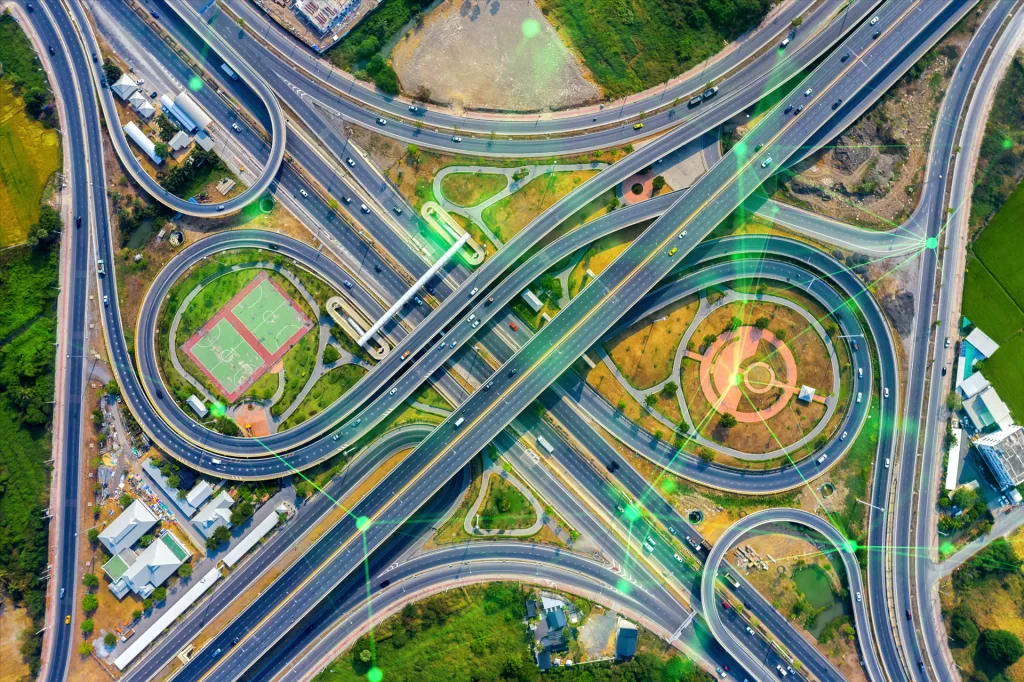
Table of Contents.
Types of Traffic Calming Measures.
There are many different types of traffic calming measures. Here are the most common.
- Speed limits: using speed limits is perhaps the most obvious type of measure. Many roads across the UK now have 20 miles per hour limits. Pedestrians that are hit by vehicles travelling at 20mph have a 2.5% chance of being killed – which compares starkly to the 20% chance of a fatality if struck by a vehicle doing 30mph.
- Vertical speed controls: these raise the roadway and therefore discourage drivers from negotiating them too quickly. They include road humps (sleeping policemen), speed cushions (raised rectangles) and speed tables (deeper humps, flattened on top).
- Road narrowing: sections that build out from the pavement can narrow the road. Alternating them creates chicanes, reducing the road to single file usage. Priority is often given to traffic that is travelling from one direction.
- Width restrictions: traffic islands, bollards and other width limiters reduce the width of the road, forcing traffic to slow down as it passes through. The same effect can be achieved using road markings, including ‘dragon’s teeth’ diamond shapes projecting out from the kerb that narrow the road and give the impression of a restricted width, thus reducing driving speeds more innately.
- Speed cameras: positioned at strategic locations, speed cameras monitor and record vehicle speeds. They serve as a deterrent against speeding as they can lead to fines, warning letters, penalty points and prosecutions for dangerous or careless driving.
- Rumble devices: transverse bar markings (rumble strips) and rumble areas are raised lines that alert drivers with vibrations and noise when driven over. They are often used to alert drivers to be cautious that a change of speed limit or change in driving conditions is coming up.
- Pedestrian aids: pedestrian crossings and refuges provide designated safe points for people to cross the road. They protect pedestrians and slow vehicles, either by forcing them to stop at traffic lights or by reminding drivers to stay alert for foot traffic.
- Roundabouts: roundabouts slow vehicle flow because drivers have to reduce speed to safely navigate them. They smooth traffic movement but with fewer stops and starts when compared to traditional road intersections.
- Smart motorway measures: smart motorways use a range of dynamic traffic management techniques, such as variable speed limits controlled by cameras, enforced lane closures and selective use of the hard shoulder. They alleviate congestion, prevent traffic bunching and calm traffic ahead of road incidents.
How Should You Drive in Areas with Traffic Calming Measures?
While traffic calming measures can present challenges to delivery drivers, understanding and respecting their purpose, coupled with strategic use of a transport management system (TMS), can lead to safer and more efficient delivery operations.
Traffic calming measures may sometimes be impossible to avoid, in which case you need to negotiate them mindfully. But at other times, bypassing them entirely can help you deliver more quickly.
It’s vital that you adhere to the rules of the road in traffic-calmed areas. Measures are not just obstacles. They are there to protect residents and road users and to reduce accidents. You should take care not to obstruct speed humps or impede the flow of traffic, making sure you allow other vehicles to pass you safely while you are parked.
Using a traffic management system (TMS) can help you plan efficient routes that may bypass areas with traffic calming measures. This can help optimise your journey times and reduce delivery times.
When you do need to deliver to properties in areas with traffic calming measures, patience and careful driving are key. You still need to drive legally, slowing down for speed humps, navigating chicanes cautiously and remaining vigilant for pedestrians. Maintaining a high level of driving conduct will ensure both you and others remain safe on the road.
If you make regular deliveries to areas with traffic calming measures, you can consider adjusting your schedules so that you deliver to these areas when they are less congested. For example, avoiding schools at drop off and pick up times can minimise delays and improve your overall efficiency.
Geo2 can help you optimise your delivery schedules and navigate routes around traffic calming measures. Try it for free today or contact us to find out more.
